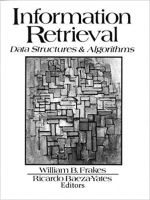Information Retrieval: Data Structures and Algorithms by William B. Frakes, Ricardo Baeza-Yates

Категория: Other
Поделиться:
In the not-so-long ago past, information retrieval meant going to the town's library and asking the librarian for help. The librarian usually knew all the books in his possession, and could give one a definite, although often negative, answer. As the number of books grew--and with them the number of libraries and librarians--it became impossible for one person or any group of persons to possess so much information. Tools for information retrieval had to be devised. The most important of these tools is the index--a collection of terms with pointers to places where information about them can be found. The terms can be subject matters, author names, call numbers, etc., but the structure of the index is essentially the same. Indexes are usually placed at the end of a book, or in another form, implemented as card catalogs in a library. The Sumerian literary catalogue, of c. 2000 B.C., is probably the first list of books ever written. Book indexes had appeared in a primitive form in the 16th century, and by the 18th century some were similar to today's indexes. Given the incredible technology advances in the last 200 years, it is quite surprising that today, for the vast majority of people, an index, or a hierarchy of indexes, is still the only available tool for information retrieval! Furthermore, at least from my experience, many book indexes are not of high quality. Writing a good index is still more a matter of experience and art than a precise science.
Скачать
Комментарии